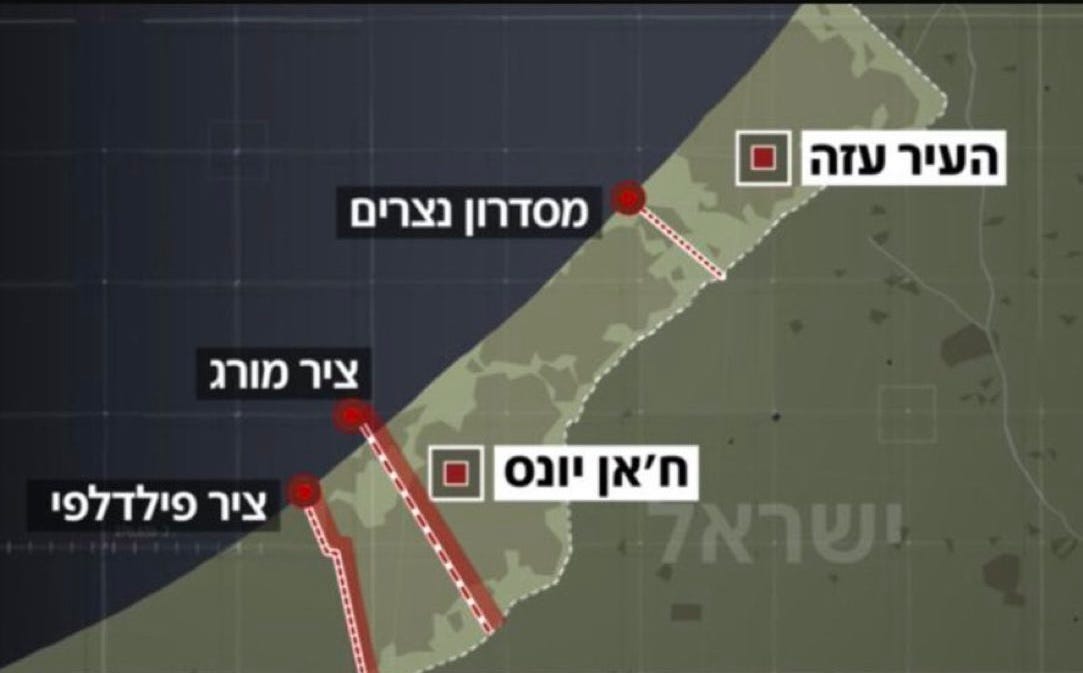One benefit of the Trump administration is that we finally have a joined-up strategy in the Middle East. Under the Biden White House, there seemed to be a determination to parcel each country into its own problem set: Yemen, Syria, Palestine and the rest were all handled as distinct issues. Of course, they are all connected and it finally seems like the administration in Washington see it that way.
In this piece, I will take a canter around the region to provide an update, and identify future threats and flashpoints. It is hard even for a professional to keep on top of, so hopefully this will be a useful resource piece looking at Gaza, Yemen and Iran. The next instalment will look at Lebanon and Syria.
Gaza
Back on 16th March, I wrote about the frozen impasse in Gaza. Since then, that impasse has thawed emphatically. Two weeks ago, I said:
On one hand, the strikes against the Houthis could be part of a wider plan: deal with the Houthi threat to give Israel freedom of action in Gaza without fearing a resumption of Houthi reprisal attacks.
On the other hand, this could simply be the US-led coalition finally getting to grips with the Houthis as a stand-alone threat to world shipping.
It is good to see that the former seems to be the case. Initial American overconfidence that the Gaza conflict could be ended overnight has given way to pragmatism. We saw the Trump-mandated ceasefire which soon, entirely predictably, broke down. What we are seeing now is a “squeeze” strategy from an IDF operating with the gloves off in regards to freedom of manoeuvre.
The escalation pathway following the breakdown of hostage negotiations has been:
Trump’s “Shalom Hamas” threat.
Direct US negotiation with Hamas.
Cessation of aid/electricity.
Low-key drone strikes.
High-profile air strikes of increasing frequency.
Targeting of Hamas commanders and administrators.
Limited ground manoeuvre.
Mobilisation of reserves by way of threat.
And as a next step on the ladder, it now looks as if Israel will bite off chunks of Gaza on an enduring basis. Today Israel announced the Morag Corridor, which has the effect of sealing off Rafah and giving total movement control. All of this is designed to isolate Hamas, kill their leaders, and pressure them into surrender and hostage return. The four weeks of intelligence gathering during the ceasefire were not time wasted: in the last week, the IDF has brutalised Hamas in the same way they did Hezbollah in Lebanon.
Critical to the whole situation is Hamas’s control over the population. Along with the hostages, the ability to dominate Gazan civilians is what has kept Hamas in the fight. They used aid as a lever of control—now that has been reduced as Israel halts the ingress of aid. This is a master-stroke: Hamas now has to feed the population from their stores or face revolt.
At the same time, we see protests on the streets of Gaza against Hamas. These may result from the nemesis of a return to air strikes after the hubris of Gazan “victory” celebrations. It may be that now Hamas is weaker than ever before, Israel has returned to their policy of paying the stronger clans in Gaza to try and seize control of areas from Hamas. It may also be the Palestinian Authority fomenting dissent.
It may be all three.
In any case, the targeted assassinations of senior commanders, the permanent seizure of terrain by Israel, and the protests against Hamas all point to a Hamas under strain, weaker than ever before, and crumbling. The question and the concern are: how will Hamas react in turn? They have already released videos threatening the remaining hostages. If they get to a point of total collapse and defeat, will they exchange the hostages for survival and emigration? Or will they take the worst option and choose martyrdom? The end game will require careful management.
Then there is the matter of the Trump Plan. I do not support, in any way, the forcible relocation of Gaza’s population. However—if they want to go? The Rafah seizure makes sense as a staging area for onwards movement to Egypt. The bigger question is over civilians’ right to return once Hamas is removed and Gaza is rebuilt. This throws up both practical and ethical questions.




